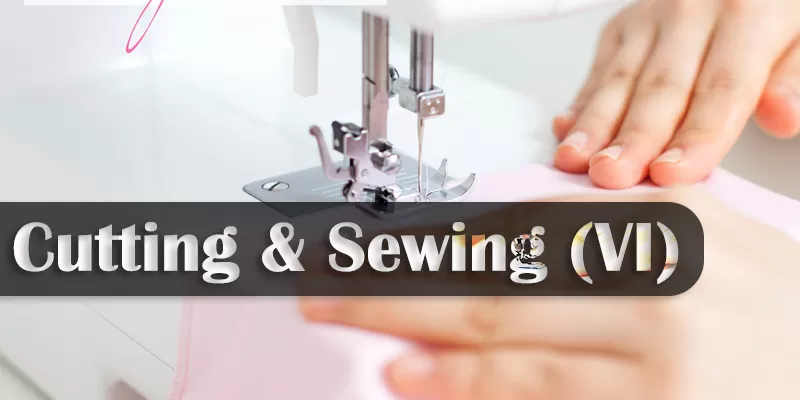
The Cutting & Sewing (For Visually Impaired) trade is a one-year vocational training program designed to equip candidates with Professional Skills, Professional Knowledge, and Employability Skills related to the job role of tailoring and garment making. In addition to classroom training, trainees engage in project work, extracurricular activities, and on-the-job training, fostering confidence and hands-on experience.
Course Structure & Key Skills
Professional Skills
During the program, trainees will:
- Follow safety procedures, environmental regulations, and maintain good housekeeping practices.
- Learn to identify, select, and execute various hand stitches on fabric.
- Master the stitching of:
- Seams with finishes
- Darts, Pleats, Tucks, Gathers, and Shirrs
- Frills, Hems, Casings, and Edge finishes
- Necklines, Plackets, Pockets, Collars, Sleeves, and Cuffs
- Develop skills to fix various fasteners on fabrics.
- Gain proficiency in pattern drafting and sewing ladies’ suits.
Measurement & Pattern Development
- Take accurate body measurements and record dimensions.
- Identify and apply different types of patterns.
- Draft paper patterns and cut fabric for ladies', kids', and gents' wear.
Semester-wise Breakdown
1st Semester
- Adhere to safety and housekeeping standards.
- Perform basic hand stitches on fabrics.
- Stitch fundamental garment components: seams, pleats, gathers, hems, necklines, etc.
- Fix fasteners and draft patterns for ladies’ suits.
2nd Semester
- Measure body dimensions accurately.
- Draft and develop paper patterns.
- Cut and sew garments for ladies, kids, and gents.
Training System
The Directorate General of Training (DGT) under the Ministry of Skill Development & Entrepreneurship offers this course through Craftsman Training Scheme (CTS). The training focuses on both:
- Domain Skills (Trade Theory & Practical)
- Core Skills (Employability & Life Skills)
On successful completion, trainees receive the National Trade Certificate (NTC), recognized both nationally and internationally.
Expected Competencies
After completing the course, trainees will be able to:
- Read and interpret technical documents and identify necessary materials and tools.
- Perform tasks adhering to safety regulations and environmental guidelines.
- Apply professional and employability skills effectively in the workplace.
Job Roles
Tailor (General)
- Makes garments for women, men, and children using hand stitching and sewing machines.
- Takes body measurements, drafts patterns, cuts fabric, and assembles garments.
- Conducts fittings, makes adjustments, and finishes garments.
- May also design patterns, supervise others, and repair garments.
Hand Cutter (Textile Product)
- Cuts garment parts from fabrics based on patterns to minimize material wastage.
- Marks fabric outlines and cuts materials using scissors.
Learning Outcomes
Upon completion, trainees will demonstrate the ability to:
- Perform various hand stitches on fabric safely.
- Stitch garment components: seams, darts, pleats, tucks, gathers, hems, etc.
- Fix fasteners securely.
- Draft and sew ladies’ suits.
- Take accurate body measurements.
- Apply different pattern types.
- Draft and cut patterns for ladies’, kids’, and gents’ wear.
Important Notes
- Training Centers must additionally provide orientation in:
- Mobility skills, daily living activities, and assistive device usage.
- Adaptations for a barrier-free environment (ramps, signage, lifts, etc.).
- Understanding psychology, sociology, and technology relevant to disabilities.
- During examinations, visually impaired trainees may be provided:
- A writer (one standard below trade entry level).
- An additional 30 minutes beyond the standard exam time.
- Trainers should be updated on advanced techniques and treatments.
- All training materials must meet proper quality and quantity standards.
- Visual charts detailing the practical processes should be available during training.
